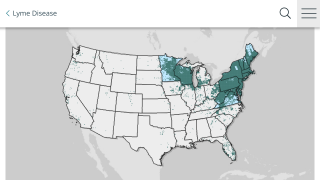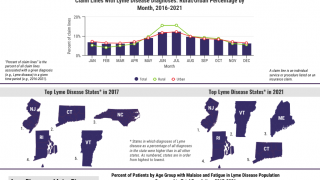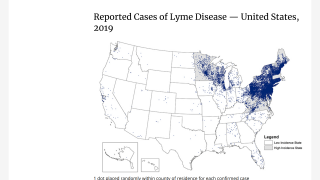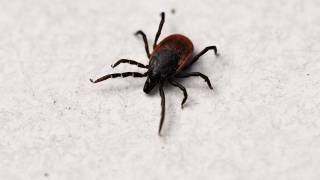UK Miscalculated Lyme Disease Risk

According to a new study, the United Kingdom (UK) may have a far larger Lyme Disease issue than previously understood.
This new study published in BMJ on July 30, 2019, found the incidence of Lyme Disease in the UK is about 3 times greater than previous estimates.
This means UK residents are at an increased risk for Lyme Disease (LD).
Additionally, these results should motivate UK health officials to increase awareness of the need for LD preventive measures. Greater awareness of the risks may also lead to more rapid diagnosis and treatment which is important to prevent long-term morbidity.
To calculate the increase in LD cases, this study used medical notes, antibiotic prescriptions, and diagnoses of the tick-borne disease made by UK general practitioners, instead of just specialists.
This study’s data were extracted from the Clinical Practice Research Datalink, a primary care database covering about 8 percent of the UK population.
The LD incidence rate went from fewer than 2 cases per 100,000 people in 2001 to 12.1 cases per 100,000 in 2012, for an estimate of roughly 955 in 2001 to more than 7,700 cases in 2012.
If the number of LD cases has continued to rise since the end of the study period, then the number of LD cases in the UK during 2019 could be over 8,000.
The previous LD estimated ranged between 2,000-3,000 cases in the UK annually.
LD was detected in every UK region with the highest incidence rates and the largest number of cases in Scotland followed by South West and South England.
Lyme disease, which is also known as Lyme borreliosis, has become the most common tick-borne infection in many parts of Europe and the USA.
The US Centers for Disease Control and Prevention (CDC) currently recommends a 2-step testing process for Lyme disease. Both steps are required and can be done using the same blood sample.
Infections from other diseases, including some tickborne diseases, or some viral, bacterial, or autoimmune diseases, can result in false-positive test results.
>> Fast Lyme Disease Testing <<
The CDC estimates around 300,000 new cases of LD per year in the US-based on the results of two studies.
A World Health Organization (WHO) report stated that about 85,000 cases are reported annually in Europe with wide variability between and within countries. The WHO noted that many LD infections go unrecognized due to inconsistent and incomplete methods of ascertainment of LD.
In related news, the Infectious Diseases Society of America, American Academy of Neurology, and American Academy of Rheumatology announced that they are now accepting public comments at the IDSA website on draft guidelines for the prevention, diagnosis, and treatment of Lyme disease, through August 10, 2019.
Lyme disease news
- Peptidoglycan May Explain Late-Stage Lyme Disease Arthritis
- Lyme Disease Has Reached All 50 States
- Lyme Disease Vaccine Candidate Approaches 2020 Finish-Line
And, there is some good news regarding a Lyme disease preventive vaccine.
Recently, a biotech company announced the initiation of the second Phase 2 clinical trial for the development of its Lyme disease preventive vaccine candidate VLA15.
The objectives for this VLA15-202 clinical study are to determine the optimal dosage level and vaccination schedule for use in Phase 3 pivotal field efficacy studies, based on immunogenicity and safety data.
“Even after a vaccine is developed, people will still need to protect themselves against all tickborne illnesses while participating in outdoor activities,” said Holly Hawbaker, PharmD Candidate, Intern for Brookshires Grocery Company.
“Ways to do this include limiting exposed skin, using bug repellants, and always checking yourself and any pets for ticks after being outside, especially when in tall grass or wooded areas”, said Hawbaker.
Our Trust Standards: Medical Advisory Committee
























